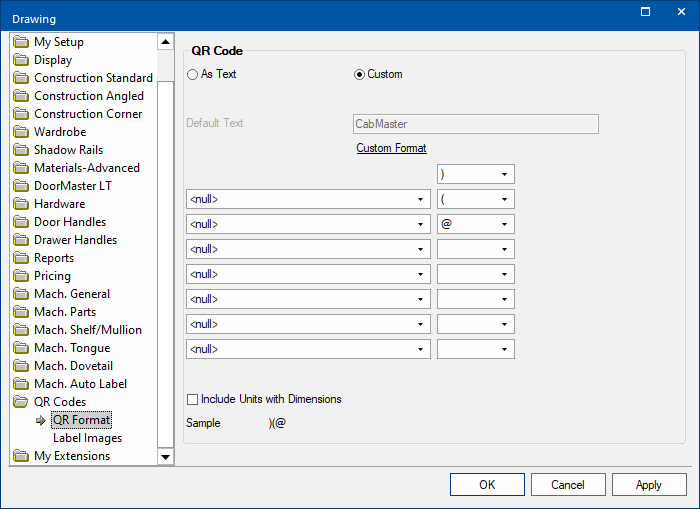

QR (Quick Response) Codes are machine readable optical labels.
They are an efficient standard for data storage, often used to define location, identification or website links. There are many applications for QR codes, for example, in a manufacturing environment they can be placed on a part to allow it to be tracked through the production process, or used by machines to know what actions to perform.
The data used for the QR code and its format ;are defined on the QR Codes > QR Format page and the QR Codes > QR Label Images page in the Catalog/Drawing Properties discussed in this topic.
The data used for the QR code and its format are defined on the QR Codes > QR Format page.
 click on the area of interest.
click on the area of interest. 
QR Codes can be defined as either:
Or
The Custom codes can be made up of a collection of concatenated properties (evaluated individually for each part), each property delimited by a single character (each of which is individually chosen).
The possible properties that can be selected from the drop list, as shown above, are:
The possible delimiting characters are:
| Delimiter | Delimiter | Delimiter | Delimiter | Delimiter |
| <null> = Nothing | ^ | // | x | [ |
| = Space | & | \\ | , | ] |
| @ | ? | _ | . | { |
| # | ! | * | ; | } |
| $ | / | - | : | < |
| % | \ | + | ( | > |
| = | ) |
An example of a Custom code using...
defines a code of...
<null>'Job Number'-'Cabinet Id'-'Part Id'@'Cut Dimension 1'x'Cut Dimension 2'
which when used would result in a textual code such as...
Job1-1-020304@388x298
and a label image of...
The Include Units with Dimensions option adds units( such as 'mm') to the dimensions.
For example, the above textual code would become...
Job1-1-020304@388mmx298mm
The QR Codes > QR Label Images page allows the selection of two logo images that can also be exported and used on machining labels.
These can be used along with or independently of the QR code and its image.